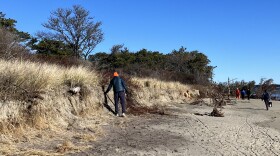The number of bears entering homes in Connecticut continues to rise in 2023, continuing a multi-year trend of escalating human-bear conflicts statewide.
So far this year, the state reports 24 bear home entries. It’s only summer, but that number is already higher than the total number of home entries recorded for each year prior to 2020.
Officials from the state Department of Energy and Environmental Protection reported the new data this week. The numbers track bear home entries from Jan. 1 through July 27.
While this year’s numbers are high, they’re still a far cry from the number of reported bears that broke into homes last year. At the end of July 2022, that number was an eye-popping 39.
By the end of 2022, that total grew to a record-setting 67 home entries, with the DEEP saying “dozens of attempted entries also took place.” Several people were also attacked by bears.
Many home entries “occurred when bears pushed through screen doors and windows, following odors from the kitchen or pantry,” the DEEP says.
There are about 1,000 to 1,200 bears in the state, the DEEP says. Bears have found suitable habitat in the northwest parts of the state — and expanded their range east — due to a combination of land and readily-available food.
Earlier this year, Connecticut lawmakers once again entertained legislation to implement a limited bear hunt in sections of the state, something the DEEP says could help make bears more skittish around people, but the controversial idea was ultimately abandoned.
Officials say the best way to reduce co-exist with bears includes managing food and garbage and removing all traces of bird food, including feeders for hummingbirds, except during winter.





